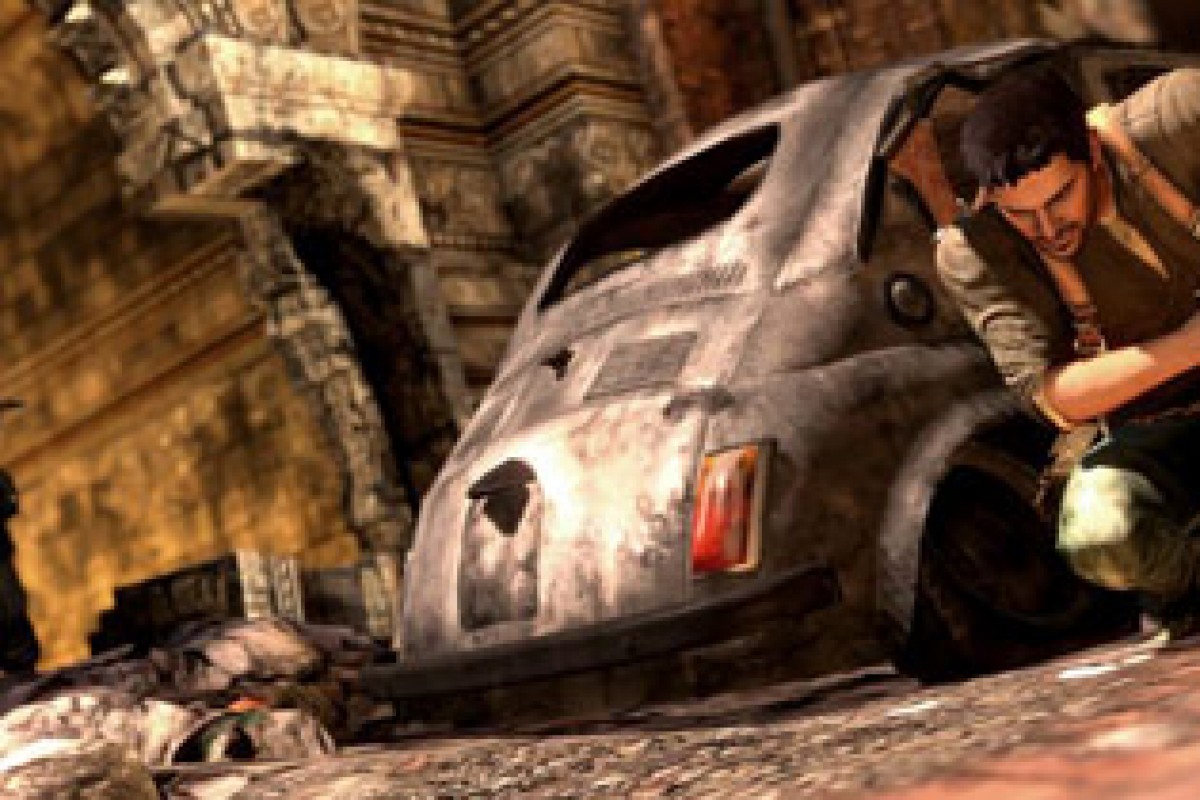SPOILER WARNING: It should go without saying that a majority of this article contains spoilers for UNCHARTED 2: Among Thieves. If you haven’t played it yet, you might want to hold off on reading this article. If you’re the type of gamer who doesn’t care about spoilers however, feel free to read on!
With new console games being priced as they are, an average of sixty dollars a pop, the question of “replayability” becomes foremost on the consumer’s mind. Bearing in mind the fact that a movie ticket costs ten dollars, a DVD costs about twenty, and a book costs ten, developers seem to have gotten into a mindset that the game has to do something pretty special in order to compete for the masses’ disposable income.
You can see this new emphasis on replayability in a number of trends. There are trophies/achievements, of course. Some developers promise us DLC that add new chapters into the story, to be released months after the game. Some try to give us as many sandbox open-world games as they can, hoping that the sheer amount of stuff in the world would be enough. Some rely on stout multiplayer systems to make up for desperately short games (I’m looking at you, Modern Warfare 2). And there are others that try to increase a game’s longevity by adding multiplayer to a sequel for a game that previously had none. Case in point, Bioshock 2, released earlier this year.
Having not played the game yet, I cannot say whether the multiplayer is any good or not. But having played the previous game, it was always difficult for me to imagine how the multiplayer would even work, context-wise.
But I’m not here to talk about Bioshock 2. This is an article about another sequel to a highly regarded single-player game that redefined gamer expectations. This is about a sequel that did include multiplayer as well, a very well-made multiplayer mode in fact, that is keeping people playing it long after they finished the single player campaign. And yet… this is about a game that really doesn’t need it.
So let’s talk about UNCHARTED 2: Among Thieves, shall we?
The Open-World Conundrum

Uru, made by Cyan Worlds (of 'Myst' fame), tried to kickstart the adventure open-world game that was still dependent on the single player element (with cooperative mode involving a few other players).
Much has been made over the debate of open-world “freedom of choice” games versus tightly plotted linear romps when it comes to whether a game is worth your money or not. Going by the opinions expressed on a number of gaming forums and websites, there are a growing number of gamers who believe that a game shows its value for money by how long it keeps you in its world, how large said world is, and how much there is to do while in there. By and large, this has been successful. You see this in games such as Fallout 3 and Oblivion, where the sheer size of those worlds and amount of side-quests has led players to sink in hundreds of hours.
Contrast these games with games like UNCHARTED 2 and the original Bioshock. Tightly plotted with no room for side-quests or exploration, these types of games rarely cross the ten-hour mark in terms of length, and could possibly feel stifling to certain types of gamers. These are games that, when standing in line to purchase them, I’ve heard people say: “Oh, those are rentals.”
This of course got me thinking as to why. From various conversations, the general consensus I get is that if a game has only one way to complete a story, with no mini-games or side-quests to complete, then it’s not worth owning. After all, they say, once you know the story, why bother going back if nothing’s going to change?
Is that it? Do most people feel that way? Are the only games worth owning really the open world games with countless choices? Are strictly linear games too stifling for their own good?
The thing is, this doesn’t hold water with me at all. Maybe it’s because I’m a huge fan of point and click adventure games, where choices are even more limited than in UNCHARTED, but I see this line of reasoning as a fallacy of perception. This fallacy seems to be rooted in the presumption that the number of hours played and the number of ways a scenario can be run is the defining factor of a game’s quality, and therefore its longevity.
The danger of propagating this fallacy is that if enough of the people who believe it express their opinions loudly enough, and there are many ways of expression, then it may lead to a decline in the number of games like UNCHARTED.
This idea is fallacious because it neglects the key factor of what a video game is: it is a piece of entertainment. It is an experience whose enjoyment rests not in the quantity of it that you go through, but the quality of it. It is as much a piece of entertainment as a book or a film, and, Choose-Your-Own-Adventure aside, you rarely pick up a book expecting the story to change from the last time you read it.
But this is not an article repudiating people’s preferences in their gaming habits. This is about showing why games like UNCHARTED are immensely replayable, as well as showing how Naughty Dog got it right.
On the next page: Immersion

